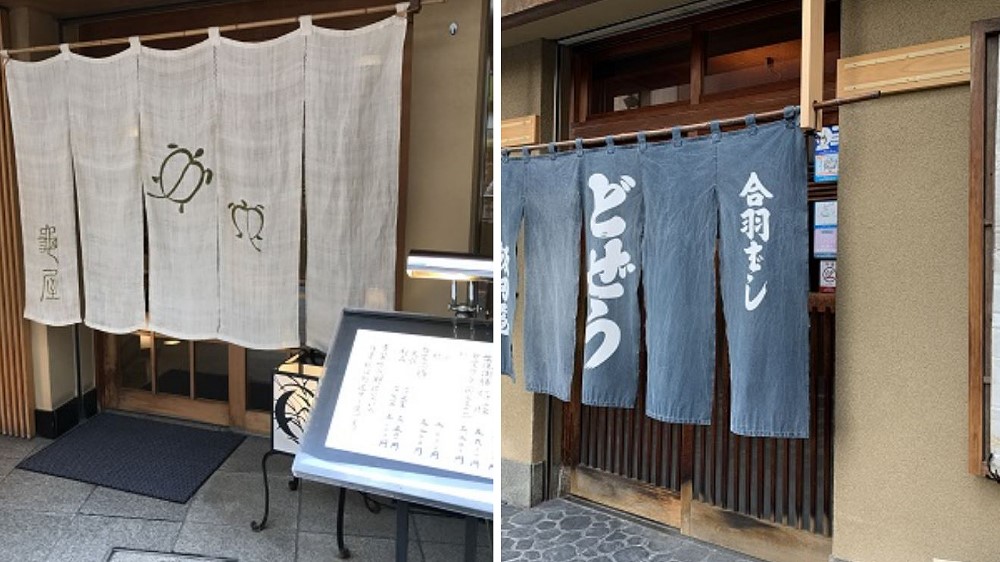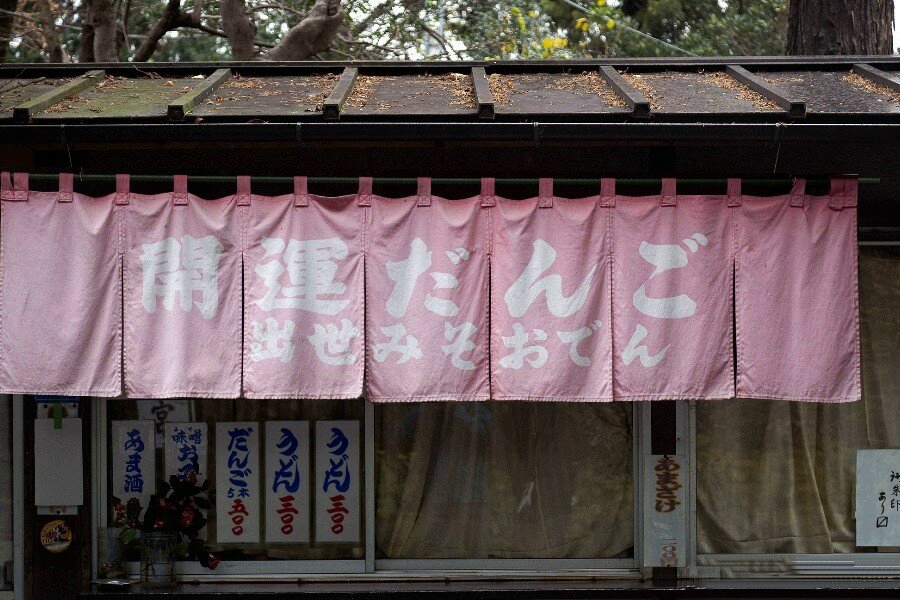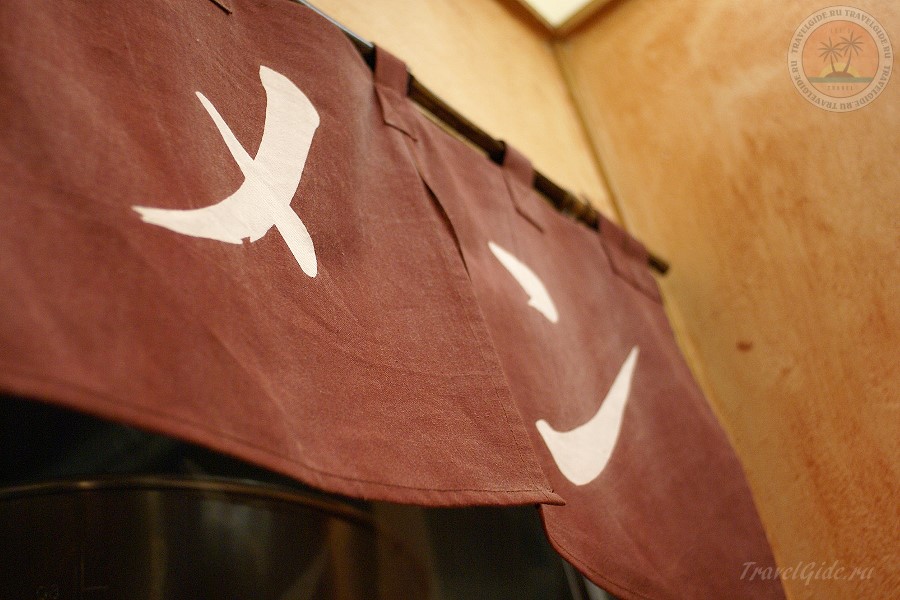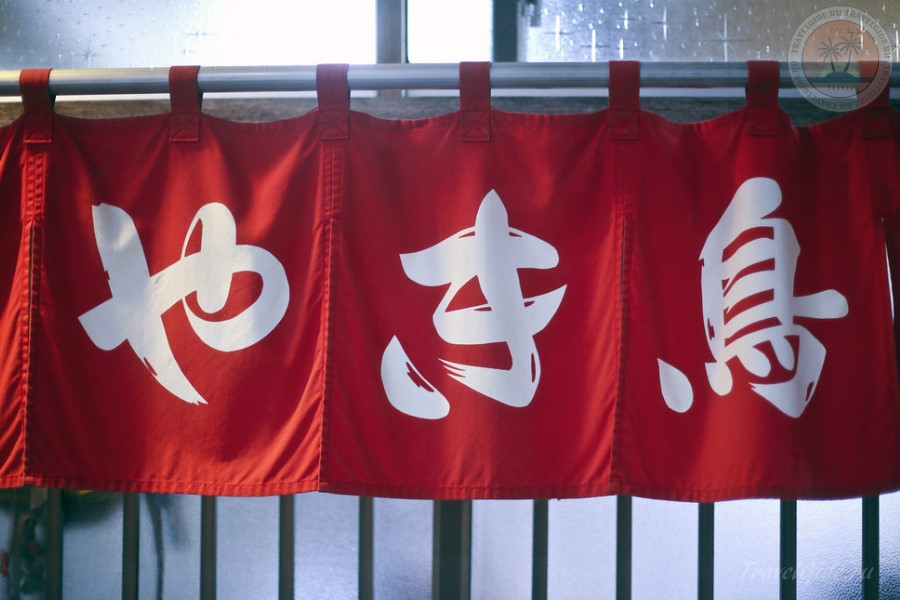
Norens: Japanese curtains with history and meaning
PBy and large, such curtains can also be referred to as fabric partitions, curtains, or something similar. But of course, it's not about the name, but about the tradition that is relevant exclusively for Japan. At the entrances of many shops, restaurants, cafes and even sentos, traditional public baths in Japan, you can often see such accessories - noren. What is their origin, what do the colors, sizes, symbols on them mean and what role do they play in the life of the Land of the Rising Sun.
When did the noren appear in Japan?
It is generally accepted that these same curtains-curtains appeared in Japan in Jomon period, before 300 BC. These were the times when Japan was still inhabited by the indigenous inhabitants of the island of the Ainu from early Japanese history, that is, really a long time ago.
In Japanese, such a curtain is called noren. In Japanese, noren is written with two kanji characters (暖簾), which means "warm curtain" or "warm bamboo curtain". And that's why. The name comes from previously used screens made of straw or bamboo, which are called sudare (簾). But unlike sudare, our "hero" is made of cloth.
It is assumed that initially norens were used only to protect against the effects of negative environmental factors. They protected from the cold wind in winter and certainly sheltered from the rays of the hot sun in the summer.
Change and addition of noren functions
The design of 暖簾 was mostly plain white or colored. And only during the Kamakura period (1185 - 1333) did meaning and message begin to take root in it. In the middle of the curtain began to draw various patterns.

Black was not held in high esteem in Japan, although the samurai loved it. Read more about it in the article. "The Meaning of Black in Japan"
Over time, the use of noren has become more diverse and has additional functions. Norens began to be used at the entrance to shops, eateries and drinking establishments. If a person saw noren on the doorway of a store or some eatery, then he could boldly go forward - the institution was open.
Further, norens became not just a sign that the institution is open, but also a kind of brand "enterprises". They became a sign and a symbol that told about the store. The noren often carried the name of the establishment or its logo, which increased the recognition of its brand.
A story about norens and sushi shops
There is an interesting legend that can be considered true. During the reign of the Tokugawa clan, called the Edo period (1603-1868), noren in sushi shops served as an indicator of the quality of products and the popularity of the institution.

It is said that the dirtier the noren was, the tastier the sushi was. Then sushi was a kind of fast food, and they were often served in small street eateries. People bought sushi, ate it quickly, and then wiped their fingers on the curtain as they left. We are talking about a time when wet wipes were not in a special move.
It turned out that a dirty noren was a sure sign that the place was always full of customers. And this means that the place is just great, and here you can eat deliciously. Of course no one wipes their fingers on noren these days. In the 21st century, the ancient noren is the pride of the owner.
How norens differ in size and species
The main length of the fabric used for sewing noren is 113 cm. But earlier and even now, the length was measured according to the traditional Japanese measure called shaku. Longer materials are called Naganoren, and the shorter hannoren.

There are also very short norens, about 34 cm wide, but very long, stretching for the entire width of the door. Such a product is called mizuhikinoren. As a separate type of noren, a partition made of hanging ropes with beads strung on them stands out.

Naganoren
Long sheets of fabric, which are mainly used to protect the interior from excessive sunlight, drying out or damage to the displayed goods. They are longer than the main standard measure of 113 cm and can be 160 cm long. They practically reach the ground.

Separate modern curtains defy tradition, although they perform their task perfectly. Below in the photo is a decoration-advertising, which clearly explains what to expect for the visitor of the institution. However the color of the inscriptions is red, and this is unacceptable, and more on that below.

Hannoren
These are pieces of fabric of medium size, about 57 cm or half the standard length of 113 centimeters. They slightly cover the interior from the sun and wind. The advantage is that they allow customers to see the goods or the essence of the store. After all, passers-by, seeing only a part of the assortment, can look inside out of curiosity. It's easier to enter the store where the noren is shorter and doesn't make people duck.

Mizuhikinoren
It is created in the likeness of wooden signs, long known in Japan. Some are stationary, others are mobile. They are hung horizontally along the width of the establishment, and not just above the entrance itself. Initially, they replaced wooden signs, so they were a single piece of material.


However, over time, this type of noren became similar to others. That is why today many of them consist of short pieces of fabric or are oblong fabric cut in several places. They play the role of graphic advertising, rather than protecting the interior from adverse weather conditions.

Hiyokenoren
These are oblong sheets of material hanging from the roof of a building. At the same time, it can be large sheets of material exposed outside on special wooden frames. Mostly hiyokenorens designed to protect windows from the sun, although in our time they are also most often an advertisement for a store or goods.

Navanoren
These are numerous hanging cords that form a veil. Their history is said to be even longer than that of the cloth noren. The ropes were made from plants of the nettle species, so it was believed that they protected against insects. Strings navanorens were typical of Japanese izakaya bars.

Enoren
This is a special type of signs made of material with drawings instead of signs. They were produced mainly for decorative purposes to hang on the wall. There has been a transformation in our times. Enorens. Today you can buy yourself a kind of product that you might even like.

Tykonoren
These are special large format curtains. Large sheets, without slits, hang almost from the roof on the street. At the bottom, they are often fixed on special stone weights. These special weights can cost up to 20,000 yen. In the wind taikonorens make a sound like a drum taiko.

In addition to all of the above types of noren, Tamanoren and Kudanoren can also be distinguished. Tamanoren It is a curtain made of threads with beads strung on them. Beads can be either glass or wood.
AND Kudanoren - This is a partition that acts as a kind of barrier. They were made by analogy with tamanorenomi, but the role of beads was most often performed by bamboo trimmings or shells.
Noren signs and symbols
Recall that during the Kamakura period (1185-1333), hieroglyphs and various signs began to appear on the noren. Then Japanese advertising was already born. The inscriptions were the names of shops or restaurants, the names of their owners.

The fabric base was suitable for coloring and applying signs and symbols. However, due to the low level of education, many Japanese were not able to read hieroglyphs. Therefore, drawings instead of signs began to appear on norens more and more often. Images of goods, or at least the main raw materials from which they were made, were circulated. Buyers liked this option much more.
It is noted that in the era of Kanei and Enpo (1624-1681) there was a significant increase in white noren with the names of shops and the designation of the field of activity. The popularity of this form of attracting customers as the main "advertising medium" has become apparent.

Around this time, the base material began to change from hemp, which is difficult to dye, to cotton, which is relatively easy to dye. The colors are much more varied.
An interesting fact for us is that norens with red inscriptions are hard to find. Most often they black or white. Red was associated with traders and buyers with shortages and losses in business. In the old days, accountants recorded losses in red ink (赤字). Profit was recorded in black ink (黒字). Therefore, black symbols and content were and remain the most common.
How norens differ in color
The palette of norens is diverse and multifaceted. And as you might guess, the colors of the noren were used earlier and now for a reason. Both traditional and modern shades remain typical for certain establishments, depending on the nature and type of goods.
Deep blue and indigo
These are the oldest colors of noren, typical of former restaurants. White drawings or calligraphic symbols contrast strongly with the color of such material, so they are clearly visible.

Indigo dye can be used for subsequent coloring up to deep blue. This dye, with a characteristic odor, is not liked by insects, so noren of this color was common in clothing or fabric stores. Because the biggest problem in storing silk is worms and moths. This color was also used by sake workshops and factories and brewers.
Blue
It was made from the dye of the common commelin flower (Commelina communis) or khanada, which lives only one day. It's a little lighter than indigo or deep blue, it's just bluer. Blue norens were popular in tea shops and meeting houses, as well as in the homes of women in the notorious Yoshiwara area of Edo. Today, blue no longer has any great meaning.

White
Black hieroglyphs and symbols on white were typical of drug and herb vendors, grocery stores, and confectioneries. White was used by apothecaries and confectioners because of the sugar. Sugar, of course, was used in the manufacture of sweets. However, such a valuable ingredient, which not everyone could afford, made them treat it like a medicine. Currently, white, along with dark blue, is the most common solution.

Brown
Brown with a hint of yellow - used to be used in most cigarette shops. During the Edo period, tobacco or dried leaves were distinctly brown. Hence the association. These days, brown items are most commonly used in pickled vegetable shops, kimono shops, candy stores, and traditional Japanese restaurants.

burgundy
Burgundy is the color of the fruit of the Japanese persimmon kaki (柿). Previously, it was associated with pleasure houses. In hanamachi, the districts of geisha and simply corrupt women, such as Yoshiwara and Shimabara, burgundy was allowed only for establishments of the highest rank.

Read more about the red-light districts and the situation around them in our time in the article. Sex tourism in Japan. Well, burgundy, having arrived in Tokyo, we can most often meet at the entrance to traditional restaurants.
Green
Norens of this deep and bright green color are typical of shops and tea houses offering green tea leaf products. These are mainly Japanese confectioneries and traditional tea shops.

Violet
Purple has been considered exceptionally elegant in Japan for centuries. Only members of the imperial family and a separate higher nobility could use it. You can read about purple and its history in the article "The Importance of Purple in Japan".

During the Edo period, there was a curious custom of hanging a purple noren on the door of the house of people who borrowed money. Until the debt was paid, the debtor himself had to hang up the purple noren. Of course, today this tradition has disappeared into the dust of time. And the purple color at the entrance to the restaurant means the unique character of the institution. It emphasizes fidelity to old Japanese traditions.
Red
Bright red, sometimes also orange, is a modern color. It is used to refer to traditional Japanese and Chinese food establishments.

How are the noren in Japan today?
Nowadays, many Japanese do not remember or even know about the essence of noren flowers. White and navy blue seem to be the most popular right now. Of great importance is the aesthetics and selection of colors that match the interior of the institution. For example, here is the entrance to one of Japanese supermarkets in Kyoto.

Effective Japanese advertising is based on visual, color and pictorial value. However, even today you can find many places where Japanese traditions are cultivated. The older generation pays more attention to this than the younger Japanese.
Today, norens are often used to decorate interiors, as a design element. In the interior, they can be used as partitions, for example, between the kitchen and the living room, or simply as a wall decoration.

Noren are also common in Japanese sento public baths, marking different entrances for women and men.
Norens are a great example of how the Japanese know how to turn something functional into something decorative. Noren style, its design fully reflects the regional culture. And even the most popular noren models differ depending on the region in which it is located.
Today, norens are made from a wide variety of materials, have different sizes, colors and designs and are valued as an excellent keepsake or just a gift from the Land of the Rising Sun.



Thanks for the interesting story. Indeed, for the Japanese, almost everything matters, and this is what makes them different. In our country, for sure, no one will think about the traditions of curtains by color, and probably there are no such traditions. The main combination of color and style, and of course the price :))